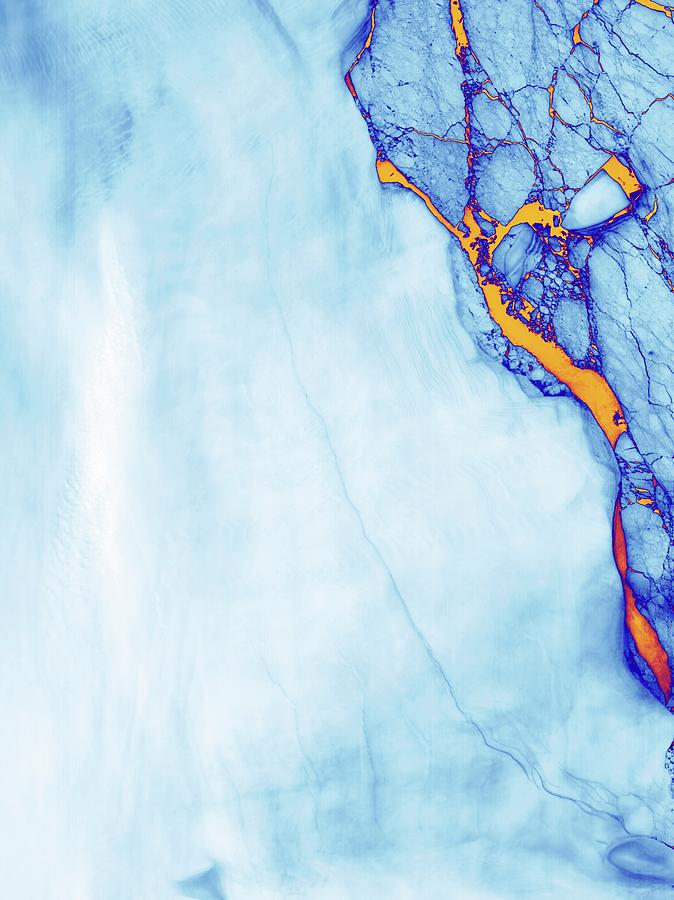
Development Of Larsen C Iceberg

by Nasa Goddard/umbc Jcet, Christopher A. Shuman/science Photo Library
Title
Development Of Larsen C Iceberg
Artist
Nasa Goddard/umbc Jcet, Christopher A. Shuman/science Photo Library
Medium
Photograph - Photograph
Description
False-colour satellite image of the crack (from bottom right) in the Larsen C ice shelf (left) that eventually led to the large iceberg, known as A-68, breaking off from the shelf into the Weddell Sea, Antarctica. Colours indicate relative warmth. Orange areas are the warmest, white and light blue the coolest, and dark dark blue and purple areas are in the mid-range. The iceberg has an area of around 6,000 square kilometres, more than 10 per cent of the area of the ice shelf. As ice shelves float, the calving of the iceberg will not lead to immediate changes in sea level. However, the presence of an ice shelf slows the seaward flow of glaciers and ice streams. Loss of part of the ice shelf could lead to increased flow that could raise sea levels. Image obtained by the Thermal Infrared Sensor (TIRS) on the Landsat 8 satellite on 17th June 2017.
Uploaded
October 7th, 2018
Statistics
Viewed 609 Times - Last Visitor from Cambridge, MA on 04/23/2024 at 1:05 PM
Embed
Share
Sales Sheet
Comments
There are no comments for Development Of Larsen C Iceberg. Click here to post the first comment.






































